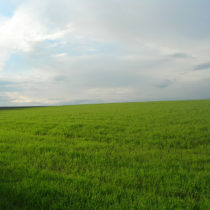Landscape Architecture for Landscape Architects › Forums › EDUCATION › Which has a better employment outlook?
- This topic has 1 reply, 15 voices, and was last updated 8 years, 4 months ago by
 Dave McCorquodale.
Dave McCorquodale.
-
AuthorPosts
-
December 2, 2014 at 10:05 am #152269
 idaParticipant
idaParticipantNice sales pitch… Low pay, lots of overtime, and cranky clients should sweeten the deal.
December 2, 2014 at 1:16 pm #152268 Andrew Garulay, RLAParticipant
Andrew Garulay, RLAParticipantIt is a diverse profession. You can choose to pursue a path that takes you to number crunching, it could take you National Parks, it could take you to urban areas, it could take you to working in and on beautiful properties in beautiful places almost every day that few people have access to.
It depends on you to recognize what opportunities are out there, what you need to do to make someone feel that you are a good fit to work for them in that situation, work for the benefit of your employer in everything you do when you are at work, always try to analyze and assess how business is done in that segment, and finally you’ll likely have to go out on your own to do things exactly how you want to do things and to make a better living. Landscape Architects do not pay their help any more than any other business people.
Depending on your ideals, being idealistic can be your path to hell in this profession. You can’t apply your ideals if you don’t have the opportunity to work. If you work in the private sector you’ll have to be working toward the benefit of the developer (whether it is a homeowner or a strip mall developer). That does not mean rape and pillage the environment, but it does mean that you have to get the job done for them. … if not, your opportunities will be very limited.
December 2, 2014 at 1:34 pm #152267 Lauren E. L. MarshallParticipant
Lauren E. L. MarshallParticipantWell stated, Andrew! As a someone in public practice, I can tell you that my experience this far has been quite different than what Trace describes above.
December 2, 2014 at 11:28 pm #152266 Trace OneParticipant
Trace OneParticipant@LLauren, my experience is all in public, also. I am interested – do you not deal with CEQR or NPDES, or vast irrigation plans? How is your experience different? I am prob ably asking for trouble, but I am too old to really care. So what do you mean, Lauren – if you care to elucidate..
Oh, and PS, I should also add that as you assemble the vast packages to get a design done, it is usually something far frrom any ideal at all, Far far from any ideal at all…
December 3, 2014 at 1:43 am #152265 Lauren E. L. MarshallParticipant
Lauren E. L. MarshallParticipantHi Trace,
I am with the U.S. Forest Service, so my design work is generally on National Forest System lands. I am often on teams ensuring that our work (whether design work or restoration work within an ecosystem) aligns with NEPA while meeting high design and aesthetic standards. Most of my design projects have been on fairly undeveloped sites, so the work is more about site layout, movement patterns and aligning with cultural and natural resources.
I am also a national program manager, so I spend a lot of time formulating and reviewing high level policy, and cultivating national partnerships to direct policy and resources towards sustainable development.
Lauren
December 3, 2014 at 10:15 am #152264 Trace OneParticipant
Trace OneParticipantThank you for your reply, very interesting. Don’t you feel bad about encroaching on forest lands with human development? (Not to make you feel bad, just curious..) You are not frustrated with the foregone conclusions of a VIA (visual impact statements), that continuously allow development, that have no way to say no to human encroachment? I find the CEQR process to be absolutely absurd and useless. All I see is more and more development, less and less nature. CEQR, VIA’s do not help at all.
Some of my friends say any little bit of mitigation is a help, but I don’t see how decorated or planted sound walls improve a view, or how a historically designed McDonalds is better than NO McDonalds. but to me there seems to be no mechanism to just say NO.
It’s my german manicheistic nature,, I geuss. .
And I can see if you only work at a policy level you may not be impacted by actual design work. i wish I could get there.
Erosion control has made some progress, I geuss, our ‘gizzards’ to sort out plastic from the storm drains are good, but San Diego, with ZERO TMDL for plastic in the bay, every rain, ends up with massive floats of plastic, all throughout the bay. So once again, i just want to say, it would be better NOT to build, than to mitigate with erosion control, better not to use plastic at all…
Any thoughts in that direction, lauren? And thank you for taking the time.
December 3, 2014 at 1:57 pm #152263 Lauren E. L. MarshallParticipant
Lauren E. L. MarshallParticipantFirst, I design mostly recreation facilities, and often I am modifying or improving existing sites. For example, I designed a new low impact campground that allowed us to close the existing camp sites and restore the flood plain they were previously occupying. I don’t see low impact recreation development as encroaching on forest lands- in fact, I think recreation is a pivotal part of conservation education for the American public. Building public support keeps the National Forests relevant and shows their importance to appropriators in Congress, allowing us to keep more land in the public trust.
Second, the Forest Service is a multiple use agency. This means we are trying to provide the greatest good to the greatest number of people. Some parts of the National Forests are managed for pristine wilderness (there is little to no human intervention in wilderness areas), but other parts are actively managed for developed recreation, for sustainable timber harvest, for fish habitat, for wildlife, for water quality, etc. Additionally, some human intervention is necessary in many forest ecosystems to keep them “pristine”. For years the Forest Service had a strict fire suppression policy. This, combined with the removal of traditional burning practices maintained by Native Americans, led to many of our forest becoming overly dense. This leaves them incredibly vulnerable to pest infestation and devastating uncharacteristic wildfire- look at the bark beetle and wildfire issues plaguing our western forests. By actively managing those forests today through prescribed burning and thinning, we are bringing them back to a more sustainable equilibrium. We plan for this work through pre-NEPA collaboration to gain public input, then the full NEPA process. So while it can be cumbersome, I see a lot of value in the NEPA process when it is used correctly to balance resource needs and build public buy in.
As for visual resource management, I think it can be valuable when utilized correctly, but I agree with you that we should have some areas that remain unscathed by human development- hence my love of our wilderness areas. That said, development can and should happen in other areas if it helps us build a more ecologically, economically and socially sustainable society. Working to ensure that development meshes with the unique natural and cultural setting of a site, and that is it sustainable and low impact, is a challenge, but it is the kind of challenge that I enjoy tackling- being the voice for that on interdisciplinary teams is fun for me.
For me, part of what I love about this career is finding balance- balance between the gut wrenching feeling of seeing a tree cut down and the understanding that wood, when properly grown and harvested, is one of the most sustainable and greenest building materials out there; balance between my belief that greenfield development should be avoided and open space should be preserved and the understanding that development is going to happen and that well planned development can preserve ecosystem services, revitalize lagging neighborhoods, maintain (and even create) habitat connections, and model sustainable site and building development that lessens our collective impact.
Interesting dialogue!
December 3, 2014 at 5:40 pm #152262 Andrew Garulay, RLAParticipant
Andrew Garulay, RLAParticipantWell, that helped make my point that if you are too narrowly idealistic it is a path to hell in this profession. You don’t get the opportunity to work on projects if you are against the project OR you do the project and are miserable because it goes against your ideals.
December 5, 2014 at 9:40 pm #152261 J. Robert (Bob) WainnerParticipant
J. Robert (Bob) WainnerParticipantKRISTEN…..I highly recommend that you focus on everything CRAIG ANTHONY’s comments here…This LA knows what he’s talking about!!!
IMO, too many other comments here are “pie in the sky – wishin’ & hopin'” stuff. All (3) design fields are very intense. You will need both excellent hand drawing skills & many, many various types of computer program drawing skills in order to succeed in today’s world. Not to mention, DESIGN is just not something that comes easily for every one. And the hours are long & intense (though, I’m sure it’s not like earning a medical or law degree). I put in at least 10,000 hours of over-time during my LA career….sort of burned the candle on both ends and in the middle. I don’t know of any design field that is really 9-5, just saying.
As Craig pointed out…..yes, I earned “peanuts” for the first 12 to 14 yrs. of my LA career. I was 42 yrs. old (with 12 yrs. on the board design experience) before I started my own one man LA firm. I was very fortunate that for approx. 17 yrs., the economy was strong and did reasonably well…I was up to my eyeballs with design projects…but, in choosing to handle 100% of my business myself, it made it difficult to have a “life”. BUT, I’m not so sure that’s the case these days…from what I’ve heard, it’s TOUGH out there.
Not to offend you or anyone else here with my comments…the pursuit of a career in the “green energy field or sustainable design” to me is sort of like chasing a “ghost”. From what I do understand about those issues…..they are mostly being pushed by our Gov’t….not by private developers. But, as LAs, I do believe we should all do our part to contribute when we can…towards those movements here in the U.S. and overseas.
My personal opinion with respect to a “Graduate Degree” has always been……..Why? Well, I understand that if you’re desire is to be a teacher or a University Professor, a graduate degree is pretty much a “must have”. But, don’t expect to get paid a high salary because you have a Masters’ Degree. IMO, “experience” will take you much further in any design field…than a graduate degree (and you have to definitely consider the time & costs involved). I’m not sure having that college debt burden hanging over you is worth it.
I think in most Universities…too many University Professors are most likely “liberals” pushing ideology on their students. Many of those professors never had “professional experience” in the fields they are teaching. (my apologies to you Professors). But, Professors should be preparing their students for what they will face in the REAL world…not an ideological one. Did I feel I was full prepared when I graduated with an LA degree…..I soon learned, that, no, not really. And, I really was never in an LA firm that was set up to “mentor” new LA grads (I just spent a lot of time looking over experienced designer’s shoulders).
It just seems that today, in time, getting a University Degree is the “easy part”…..finding a JOB in any DESIGN field is the really challenging part! I keep asking myself, “Where are these thousands of University grads going to get a job”?
I don’t wish to discourage you from going after any type of design degree….but, I highly recommend you do a TON of research before you make the leap. I wish you the Best of Luck!!!
December 6, 2014 at 1:58 am #152260 J. Robert (Bob) WainnerParticipant
J. Robert (Bob) WainnerParticipantOK…..I get it, Lauren. So, that’s where another huge chunk of our U.S. taxpayer dollars are going. It’s just my opinion….our Gov’t is entirely to large and seriously overly regulated.
I realize & am happy that our U.S. Forests are in good hands……but, if you just add up ALL of the tremendous number of areas where our Gov’t is involved “regulating”, etc…..it’s way over the top.
Personally, for me, when I first started my LA career……I made a decision to avoid City, State & Federal Gov’t LA positions. Again, too many rules, regulations…and didn’t feel I would have the “independence” to design freely.
December 6, 2014 at 2:42 am #152259Anonymous
InactiveThanks Bob… from a guy you would probably call a liberal. I like to call myself a thinker. I think this country needs liberals and conservatives, and I still love you because you’re an American. Please note my friend that not all liberals want to give murderers hugs, and lay down their life for some crappy tree.
December 6, 2014 at 6:43 pm #152258Anonymous
InactiveI had no intention of this turning into a political dispute, but I would also like to mention that just because I’m interested in a career related to sustainability, does not mean I’m a diehard liberal. It simply means I enjoy being outdoors and wish to pursue a field where I can responsibly use elements of the outdoors in design, consulting, planning, etc.
I’m actually pretty “middle of the road” when it comes to politics.
I agree, Craig, that we need both of the two parties for balance in our country.
December 8, 2014 at 8:36 am #152257 J. Robert (Bob) WainnerParticipant
J. Robert (Bob) WainnerParticipantI apologize, Kristen…..I didn’t intend to get into the “politics” of the various design fields with my comment/s.
I guess the point I was trying to make was….with respect to getting involved with “green energy & sustainable” type projects…it’s (from my understanding) pretty narrow fields. Because, they aren’t “traditional” types of design areas…such as residential, commercial, retail, multi-family, city parks, University campus planning, streetscapes, etc., there just doesn’t seem like there’s going to be many opportunities for that type of design…..and, well, earning a living (profits) is just part of being in any business. Maybe as we all move forward in time…green energy & sustainability will get more traction…and become more affordable for developers.
Do understand though, that being a professional designer (LA, Interior Designer, Land Planner, etc.), probably 90% of your time will be spent in a design studio – indoors…producing computer generated drawings, hand graphics, design studies, cost estimates, contract proposals, writing specifications, writing up inspection reports, client meetings, meeting with other design consultants, etc.
During my LA career, having designed many projects outside of the Dallas area (throughout Texas & in 16 other states), many of my clients did request that I make project inspection trips. So, that was an interesting aspect of my job – travel and getting away from the office environment – getting out doors. Though, I will say, some of those inspection trips were in very hot & extremely cold conditions – but, of course, I was compensated for my time (plus travel costs). Follow each inspection trip, I would send digital photos & a detailed inspection report to my clients.
To Craig Anthony…..Well stated comments, my friend. I hope all is going well with you and your LA business up North! I always enjoy reading your comments here on Land8……Your wisdom & sense of humor are very much appreciated! *smile*.
December 8, 2014 at 9:40 pm #152256 Tosh KParticipant
Tosh KParticipantDepending on the program, some degrees will offer more options post graduation (I recall a professor from ASU chiding one of my students who mentioned an ID degree to do an architecture degree because it gives you a broader sense of design (and is typically more rigorous) and you can still do ID. As others mentioned LA will still allow you to do UP, but the reverse is much more difficult. I’m personally not a fan of ‘sustainability’ as a field of study (because the topic is vague at best), but it may be marketable to some.
Other avenues you might consider – systems engineering, industrial design (I have a friend with a UP degree who works for a firm that analyzes product packaging from an environmental impact standpoint and strategizes on improvements large manufacturers can make in their packaging).
3 yrs is relatively short (though with tuition rates, it’s not cheap), and I would recommend 3 for most design fields anyway, as it gives you more time to actually understand the field you’re in.
all in all env sci may give you the most macro-scale foundation for any of the 3 fields. ID/LA programs tend to have very full course loads that may limit your ability to shape your degree with electives.
December 13, 2014 at 1:36 pm #152255Anonymous
InactiveIMO the whole sustainability/green thing has been with us since the 70s. We just called it something different, but it’s basically the same thing. It’s same thing the old guys were talking about in the 80s when I was a student and it’s been repackaged as new cool stuff like holey jeans or skateboards. I believe that in the not-so distant future we will be integrating green energy and sustainability into our projects without thinking about it. I think it will happen because we won’t have any other choice. I know that I’ve evolved into being greener without a lot of effort. I don’t specify stone for my jobs from faraway places. There once was a time I wouldn’t think twice about spec-ing stone from Arizona for a project in Cleveland.
-
AuthorPosts
- You must be logged in to reply to this topic.


